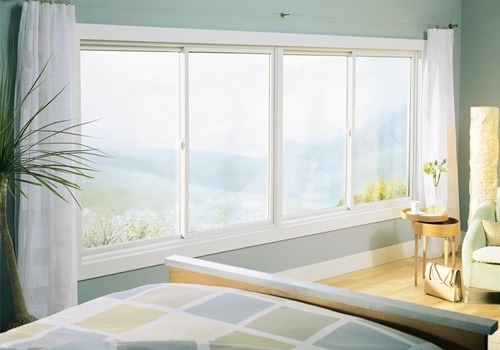MENU



These days, Indianapolis home owners are becoming more and more environmentally conscious. The goods you choose to buy and the products you choose to use do have an impact on the earth you live on, so it’s important to put some thought into these choices. The same is true when it comes to building materials, such as replacement windows. Upgrading your old windows is certainly an environmentally friendly choice, and new windows are better than ever for the environment. Here is a closer look.
Why Is Replacing Your Windows an Environmentally Friendly Choice?
As they age, windows tend to grow leakier and leakier. More air passes through between the glass and the window sash. In the summer, these warm air leaks cause your air conditioner to work harder and consume more electricity. Since most electricity in the United States is generated by burning coal and other fossil fuels — a process that releases pollutants — excessive air conditioning use is not an environmentally friendly practice. In the winter, cold air leaks in through your windows, and your heater has to work harder, which means it burns more natural gas or oil.
New windows are far less leaky than old, worn out windows. They lower your energy consumption, which in turn reduces your carbon footprint and benefits the planet.
What Makes Today’s Windows More Environmentally Friendly?
In addition to simply being new and less leaky, today’s windows are made with environmental consciousness in the forefront. They have a few qualities that make them even better for the planet.
Recycled Materials
The best replacement windows are made from a composite material, like Fibrex® from Renewal by Andersen. Fibex is made from the wood fibers that are left over as a waste product after other wood items are manufactured. This process reduces the amount of waste that is sent to the landfill, which is good for the planet. Choosing Fibrex over natural wood also reduces the amount of wood that has to be harvested.
Better-Insulating Materials
Composite materials like Fibrex are also better insulators than materials like vinyl and aluminum. Less heat is passed through Fibrex than through vinyl. This reduces your energy consumption even further and keeps your heating and AC bills even more manageable. Plus, Fibex stays tightly sealed to the glass rather than warping like vinyl over time, so it is far less likely to lead to air leaks.
Performance Glass
Glass windows are great in that they let plenty of light into your Indianapolis home and allow you to look outside. However, normal glass is a terrible insulator. Heat passes right through it! Thankfully, window manufacturers have found ways to make glass more energy-efficient and therefore better for the environment. Double-pane windows have a layer of air between the panes of glass to act like an insulator. Low-e glass, like SmartSun™ glass, is coated with a metallic substance to reflect more heat waves and reduce energy loss.
Less Maintenance
New window materials like Fibrex do not have to be painted or stained like wood. This is also of benefit to the planet since many paints and stains release VOCs and other harmful chemicals into the atmosphere, contributing to the greenhouse effect.
If you are looking for environmentally friendly windows for your Indianapolis home, contact Renewal by Andersen to schedule a free, in-home consultation. Our expert technicians will recommend the most efficient, eco-friendly windows for you.